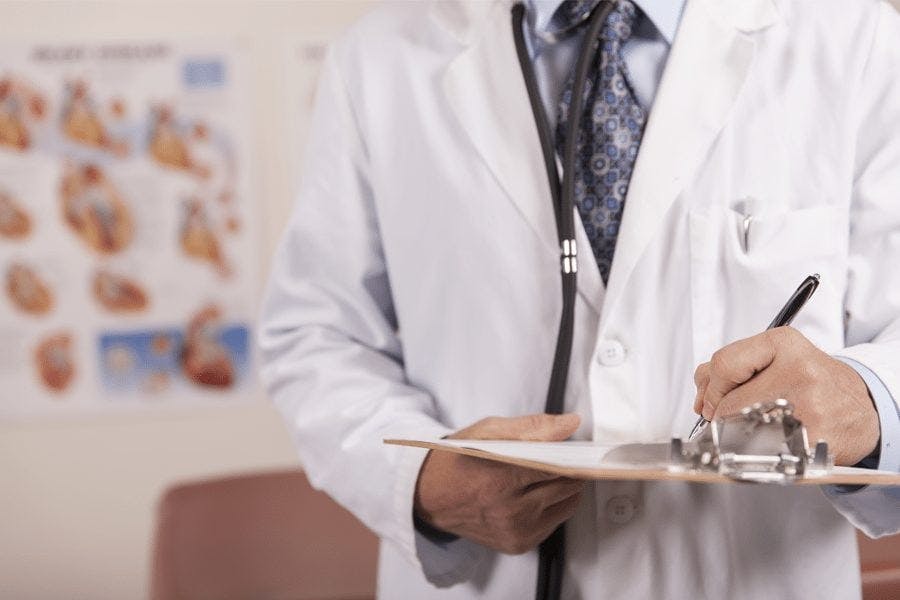
2024-07-12T16:54:51
Sunscreen Travel Tips
- Dermatology
October 17, 2016 | OB/GYN

Every cell of the human body contains a nucleus. Inside each nucleus are genes that store genetic material. Genes contain all the codes for inherited traits passed down through the generations. Genes occur along rod-like structures, known as chromosomes. The nucleus of each cell usually contains 23 pairs of chromosomes for a total of 46. The mother provides half of the chromosomes while the father provides the other half.
Down syndrome occurs when a person has an extra copy of chromosome 21. This extra copy can be a partial duplicate of the chromosome or a complete copy.
The extra copy alters the course of development, causing the characteristics associated with Down syndrome. These characteristics can include small stature, low muscle tone, an upward slant of the individual’s eyes and one deep crease across the center of the individual’s hand. Since every person with Down syndrome is a unique individual, these characteristics can appear in different degrees – or not at all.
Down syndrome is the most common genetic condition in the United States today, according to the National Down Syndrome Society, affecting about one in every 691 babies born in the nation. About 400,000 people in the U.S. have the condition, and approximately 6,000 babies are born with the extra chromosome every year.
John Landon Down published the first accurate description of a person with the syndrome in 1866. This scholarly work earned the English physician recognition as the “father” of Down syndrome. Other people had recognized the characteristics of the syndrome but Down was the first to describe it as a separate and distinct condition.
Medical and scientific advancements enable researchers to investigate the characteristics of Down syndrome. Jérôme Lejeune identified the syndrome as a chromosomal condition in 1959 when the French physician observed 47 chromosomes in the cells of people with Down syndrome instead of the usual 46. Later discoveries led scientists to determine the extra copy was of chromosome 21. An international team of scientists identified and catalogued each of the approximate 329 genes on chromosome 21, opening the door to even greater advances in the understanding of Down syndrome.
Trisomy 21 accounts for 95 percent of all cases of Down syndrome. This occurs when there is an error in cell division, known as nondisjunction, which results in an embryo with three copies of chromosome 21 instead of two. At conception, or just prior to it, a pair of the 21st chromosome in either the egg or sperm fails to separate as it should. The extra chromosome is replicated in every cell of the body as the embryo grows and develops.
Mosaicism, also known as mosaic Down syndrome, occurs when there is a mixture of two types of cells – those containing 46 chromosomes and those with 47. Those with mosaic Down syndrome may exhibit fewer characteristics of the syndrome than those with nondisjunction or translocation.
Translocation accounts for about 4 percent of cases. In translocation, cells contain 46 chromosomes but a full or partial copy of chromosome attaches itself to another chromosome to cause characteristics of Down syndrome. The extra chromosome usually attaches itself to chromosome 14.
Scientists are still working to discover the underlying cause of the extra chromosome 21 common to all individuals with Down syndrome, no matter which form of the condition they have. Maternal age is the only factor that medical researchers have been able to link to an increased chance of having a baby with trisomy 21 or mosaic Down syndrome. Even so, 80 percent of children with Down syndrome are born to women under the age of 32, primarily because of higher birth rates among younger women.
So far, scientific studies have not discovered any evidence that Down syndrome is the result of environmental factors or any activities the parents may have engaged in before or during pregnancy.
The extra copy of the 21st chromosome can come from either the father or the mother. The extra copy comes from the father in about 5 percent of cases
At age 35, a woman has about a one in 350 chance of conceiving a child with Down syndrome. The chances increase to one in 100 by the age of 40, and one in 30 by age 45. Many couples are now putting off pregnancy until later in life and this will likely cause an increase in the incidence of Down syndrome conceptions. Because of this trend, genetic counseling is becoming increasingly important to advise patients about the prevalence of Down syndrome, recent advancements in diagnosing the condition, and protocols for caring for a person with the syndrome.
Doctors perform screening and diagnostic tests of Down syndrome before a baby is born. Prenatal screens help doctors estimate the chance that a fetus has the syndrome while diagnostic tests provide a definitive diagnosis of Down syndrome. Screening usually involves blood tests and ultrasounds. New advanced screens can detect the fetus’s chromosomal material circulating in the mother’s blood. Diagnostic tests include chorionic villus sampling (CVS) and amniocentesis.
For more information about Down syndrome, or to arrange for screening or diagnostic tests, make an appointment with Revere Health. Our team of obstetricians, gynecologists, nurse practitioners and certified midwives provide a wide range of services to women at every stage in life.
WRITTEN BY:
The Live Better Team


2024-07-12T16:54:51

2024-07-02T11:42:04

2024-07-01T13:49:28

2024-06-21T14:29:51
This information is not intended to replace the advice of a medical professional. You should always consult your doctor before making decisions about your health.